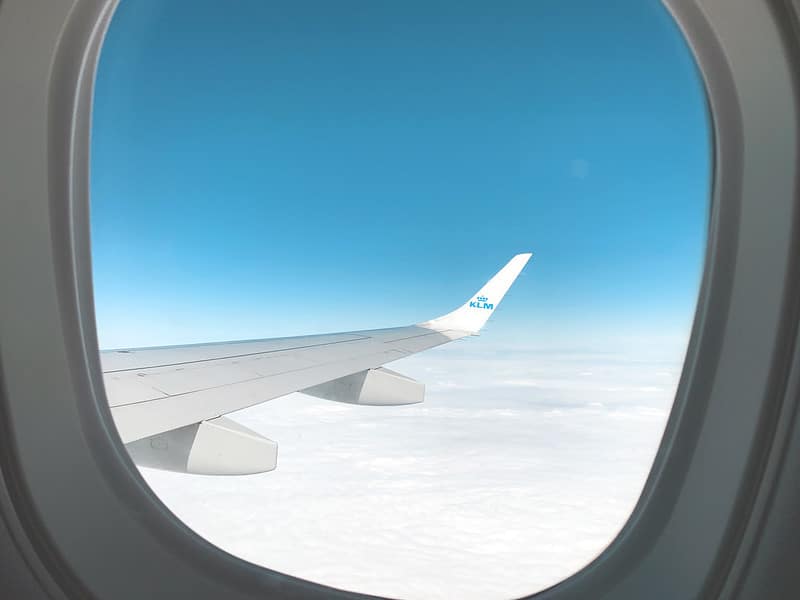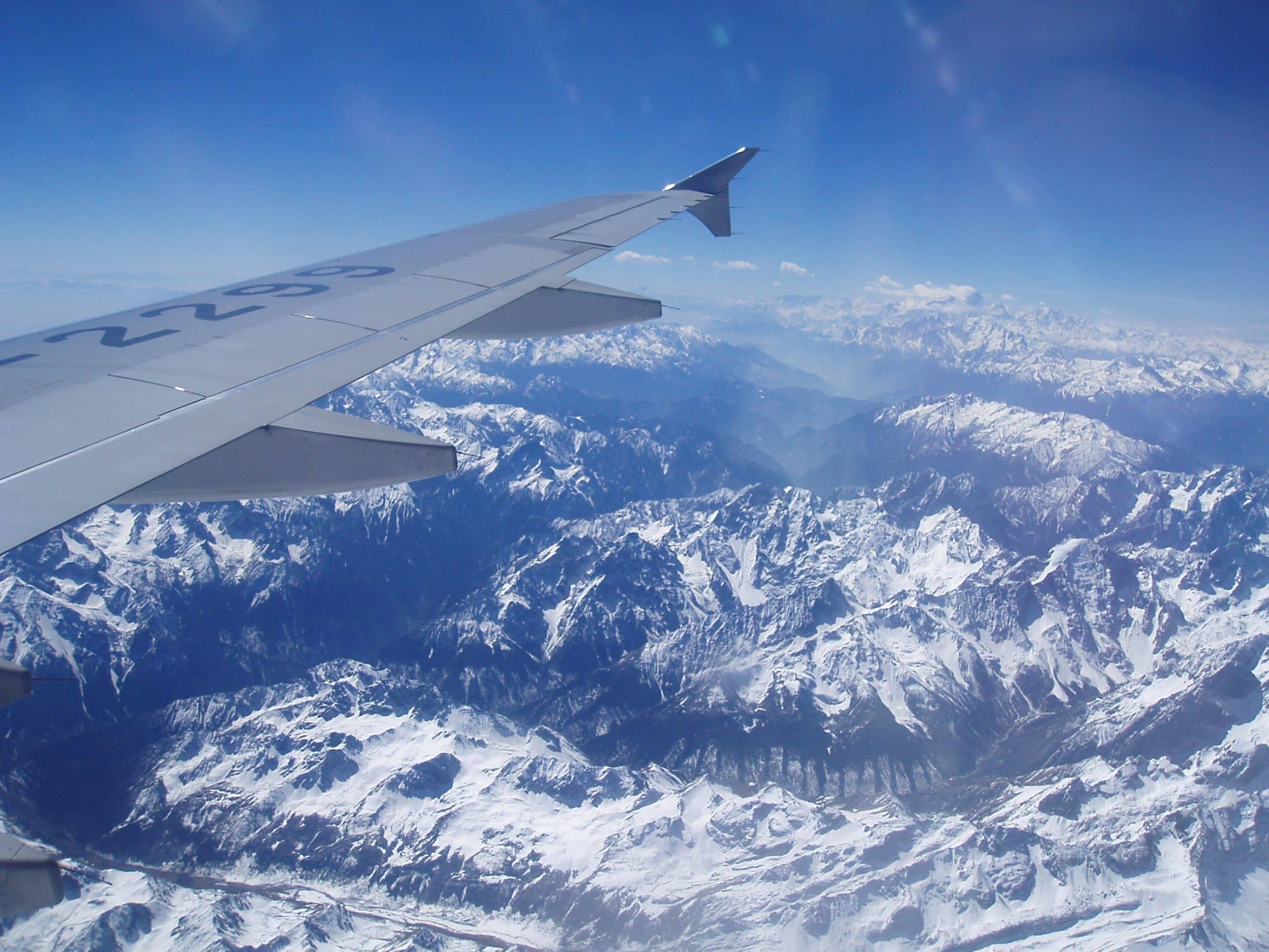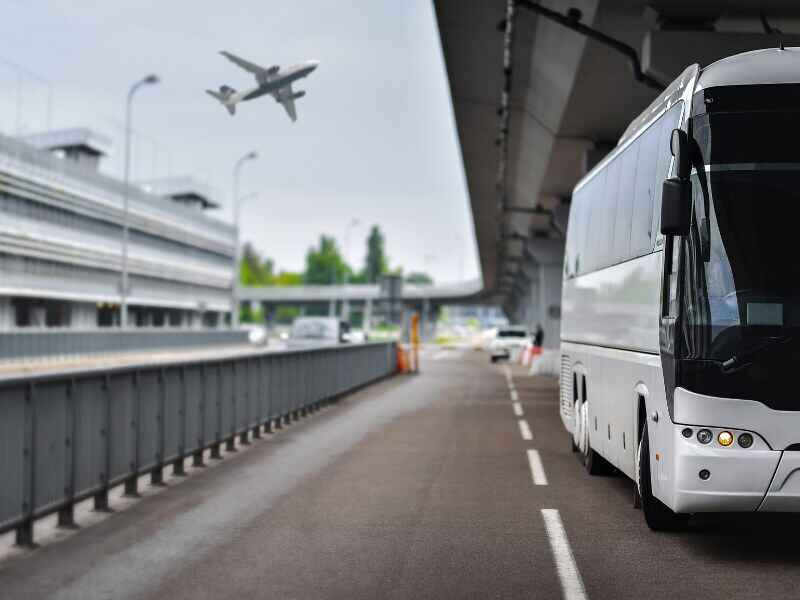Direct vs non-stop flight: What’s the difference?
Wondering what the difference is between direct vs non-stop flights? Find out here and discover what’s your best option when you’re flying.

When planning a trip, you’ll want to make sure to get the best deal possible and end up at your destination as quickly and easily as possible.
However, with so many airline terms to navigate, such as non-stop and direct flights, it can be confusing to determine which option is the best.
In my series of air travel terms, I’m covering the commonly misunderstood flight and airport vocabulary.
In this post, I’ll demystify these commonly confused terms so you can book your next flight with confidence.
Let’s dig in.
This post contains referral links for products I love. Adventurous Miriam earns a small commission at no extra cost to you if you purchase through my links. I appreciate your support ♡ Learn more
Direct vs non-stop flights
Understanding flight terminology
Navigating the world of travel lingo can be a real head-scratcher, especially when it comes to flight jargon.
The language can get pretty geeky and words often seem to swap places, leaving you in a muddle.
So, getting a grip on these terms is key to dodging any hiccups when you’re sorting out your next sky adventure.
What is a non-stop flight?
A non-stop flight is the simplest of all air travel. It means that you travel from one point to another without any stops, transits, or layovers.
When you take this flight, you board your plane, buckle your seat belt and disembark at your final destination.
The benefits of taking a non-stop flight are obvious: You arrive at your destination faster, with a shorter flight time. However, it comes at a cost that’s a bit higher than other types of flights.
What is a direct flight?
Now you may wonder, isn’t a direct flight the same as a non-stop flight?
While these two terms often get confused, they are different.
A direct flight might stop at one or more airports, but the passengers do not switch planes. Instead, the plane continues to the final destination after stopping for fuel or picking up additional passengers.
Direct flights are often cheaper than non-stop flights, and the stopover can be useful for stretching your legs, or grabbing a snack before continuing on.

Key differences between direct vs nonstop flights
The primary difference between direct and non-stop flights is that, with direct flights, you may have to exit your aircraft at least once, while with non-stop flights, you will stay on the same flight.
A non-stop flight will usually be quicker, but it may not always be the primary consideration when booking travel.
Whereas direct flights may be less expensive, more convenient, and allow you an opportunity to stretch your legs or grab a bite.
Here’s a comparison table of the differences:
| Direct flights | Non-stop flights | |
|---|---|---|
| Stops | May stop at one or more airports en route to the final destination, but you do not change planes. | Go directly from the origin to the destination without any stops. |
| Travel time | Typically longer due to the stops. | Typically faster as they take the most direct route and don’t stop along the way. |
| Cost | Often less expensive than non-stop flights. | Can be more expensive due to the convenience and shorter travel time. |
| Risk of delays | Higher risk due to potential hold ups at the intermediate stops. | Lower risk as there are no intermediate stops. |
| Baggage handling | Slight risk of baggage mishandling during the stopover(s). | Less likely for baggage to get lost or delayed as it remains on the same plane. |
| Comfort and convenience | Less comfortable and convenient due to the hassle of stopping. | More comfortable and convenient because you avoid the hassle of stopping and stay seated. |
Direct vs non-stop flight
Common misunderstandings and mistakes
There are some common misconceptions about what non-stop and direct flights actually mean.
It’s not uncommon for someone to mix up these two distinct terms, which can lead to booking the wrong types of flights.
Another common mistake made by travelers is not realising that the duration of a direct flight can sometimes take longer than a non-stop flight, because of the added stopovers.
Tips for choosing between non-stop and direct flights
When you’re planning to catch a flight, there’s a bunch of things to think about – like how much it’ll cost, how convenient it’ll be, how long you’ll be up in the air, and where you’re heading.
Sometimes, you might prefer a non-stop flight, while other times, a direct flight could be a better pick. If you’re all about saving time, then a non-stop flight might be your best bet.
But if you’re more focused on saving some money, a direct flight could be less pricey.
Plus, you’ve got to consider how long you’ll be flying, your total travel time, how many pit stops you’ll have, and how far you’re going – all these can sway your decision.

To sum it up
Next time you’re booking a flight, make sure you know your non-stops from your directs.
It might seem like small details, but it can shape your travel experience, from how much your ticket costs to the length of your trip.
Remember, these two types of flights are different beasts, and picking between them comes down to what works best for you.
With this knowledge in your back pocket, you’ll be all set to make savvy choices when booking flights for your upcoming adventures.
FAQ about direct vs non-stop
Which is better nonstop or direct flight?
If time is your priority, go nonstop. If you’re budget-focused and don’t mind a few stops, a direct flight can be cheaper. So, it’s all about what matters more to you: speed or savings?
What is considered a direct flight?
A direct flight is a bit of a tricky term. Despite its name, it doesn’t necessarily mean you fly straight from point A to point B without any stops.
Instead, a direct flight may actually have one or more stops along the way, but you wouldn’t need to change planes.
So, it’s kind of like a pit stop to refuel or drop off and pick up passengers before continuing to your final destination.
What is the difference between a direct flight and a connecting flight?
A direct flight, despite its name, might make stops along the way to your final destination, but you stay on the same plane the whole time.
A connecting flight, on the other hand, means you’ve got to change planes at some point during your journey.
You land at an intermediate airport, disembark, and then board a different plane to continue your trip.
What does nonstop mean in airlines?
In airline lingo, a nonstop flight means exactly what it sounds like – the plane takes off from your departure city and lands at your destination without making any stops in between.
It’s the quickest way to fly between two places because you’re literally going non-stop. So, if speed is your top priority, this is the way to go!






